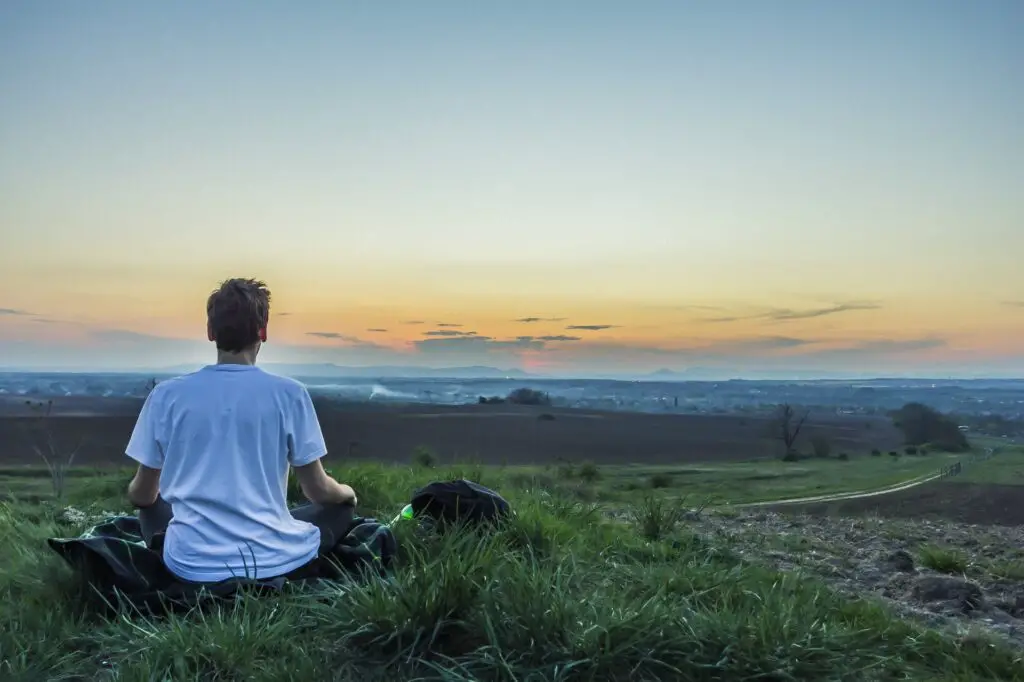So you want to increase lung volume? There are several ways to do this, but you should probably start with becoming a better breather. That means, you should be able to fill up the entire volume of your lungs with a deep inhale before you actively start to do exercises that will increase lung volume.
Let me show you what I mean.
Active breathing vs. passive breathing
Most people go through life without taking active control of their breathing. The autonomous nervous system takes over the act of breathing if you don’t think about it, which means that you don’t have to think about it…
And that means that most of us never think about breathing.
The body responds to simple stimuli that will increase or decrease the breathing rate. For example, the breathing rate will increase if CO2 in the body increases or if the temperature decreases.
The body does not optimize each breath. If you are relatively untrained your inhales could be short and you may be using less than 75% of your vital capacity for each breath.
Optimizing the respiratory system is something we have to do by consciously using it. In other words, you need to become aware of your breathing, and consciously change the way you breathe.
Get your shoulders out of the way first
But first, let’s become somewhat aware of what our posture does to our breathing. The shoulders are only attached to the rest of the skeleton by the collar bone. Because of that, a substantial weight pushes down on the widest part of the rib cage: the weight of your shoulders and arms combined.
Don’t believe me? Then try this:
- Stand up or sit up straight with your arms hanging down the side of your body. Breathe in as deep as you can.
- Stand up or sit up straight with your hands on your hips and your elbows out. Breathe in as deep as you can.
If you noticed it was easier to breathe in that second time, you felt what I am talking about.If you did not you are either a blessed freak of nature or you are hardly using your upper intercostal muscles.
Funny side note. Opera singers have their arms wide and in front of them when they sing a strong note for a reason: it opens the chest.
In order to loosen up the shoulders:
- Stretch arms out overhead, and in a wide arc let the left arm come underneath the right. Clasp your hands together (as best you can). Hold for one minute and then switch sides. This is part of the yoga ‘eagle pose‘.
- Put your hands on your glutes, fingers pointing down look forward and up so that your spine is slightly arced back. Try to gently move the elbows closer to each other behind your back. You should feel a stretch in your front shoulders.
This simple preparation goes a long way. It won’t help you actively increase lung volume yet but it will allow you to get the most out of your breathing later. There are many more ways to open the chest with stretches but let’s move on to the actual breathing.
Three simple breathing exercises

Audible inhales
One of the best ways to actively increase your lung volume is by limiting the flow of air through your throat and training yourself to keep that flow constant. Try it:
- Keep one hand on your belly, and one on your chest.
- Inhale slowly and constrict your throat slightly so that your inhale is audible (another way to inhale audibly is to make a whistling sound with the lips).
- Focus on the belly first. Your lower hand should be moving outward.
- Keep the sound of your breath constant.
- Once it becomes difficult to keep that lower hand moving out, your chest should start to inflate. Try to keep the lower hand outwards as much as you can and continue with inflating the chest. Exhale slowly and repeat.
Alternate nostril breathing
Alternate nostril breathing is a similar exercise but additionally clears your nasal cavities. The exercise is fairly straightforward.
- Sit with a straight back and close your right nostril with your right thumb. Inhale fully and slowly through the left nostril.
- At the top of your inhale, pause and release your right thumb. Close the left nostril with the ring finger of the same hand.
- Exhale fully and slowly through the right nostril, and then inhale fully and slowly. Pause and close the right nostril.
End range of motion exercise
When I was recovering from a rotator cuff injury I was given an exercise to work on the power and strength at the end of my range of motion. It was an easy exercise and I realized it could be done with intercostal muscles as well. I believe that out of the three exercises here this one will give you the fastest results.
- Sit with a straight back
- Put your hand on your hips (so the shoulders don’t weigh down the ribcage)
- Inhale slowly and fully
- Once you are at the max inhale, use your diaphragm and intercostals to keep it at the max.
- Do not lock the throat or mouth. The air should be able to move freely from your mouth into your lungs, and you need to use your respiratory muscles to keep it in the lungs
- Exhale after 10 seconds
- repeat 5 times
How long should you exercise? Just remember that five minutes per day beats one hour once per month.
Forget about packing for now
Packing, or over-inflation of the lungs, is a simple tool that can increase lung volume directly and dramatically. However, because it is a passive tool it works against the resistance of the rib cage. The over-pressure in the lungs has caused embolisms resulting in partial paralysis, and a range of other serious injuries in freedivers on land and in the pool. It should be avoided for anything but dives that are well below residual volume. From AIDA’s Facebook announcements:
“Recently several packing related incidents with lung damage and/or transient neurological symptoms have been reported. Keep in mind that lung packing and pack stretching are very advanced techniques that may lead to serious medical conditions and even death. Packing should be performed with care and is something that we do not recommend in the AIDA education program”
Packing alone is not worth your time. Breathing exercises are always good, both to increase lung volume and better breathing overall. Once you are going to push the numbers during very deep dives packing is something you may want to consider. If you are interested in more info, Walter Johnson has a great article on packing on his website Freediving Solutions.
When and how many exercises should I do?
Great question. When considering how much time to put in any exercise remember that consistency and moderation are the long term winners. Five minutes per day will increase lung volume, but one hour on one day per month is not going to do much for you. The best time to do these exercises is right in the morning, so you can reap the benefits all day.
- Remember Sara Campbell’s Yoga for Freediving? Lots of info about breathing there.




